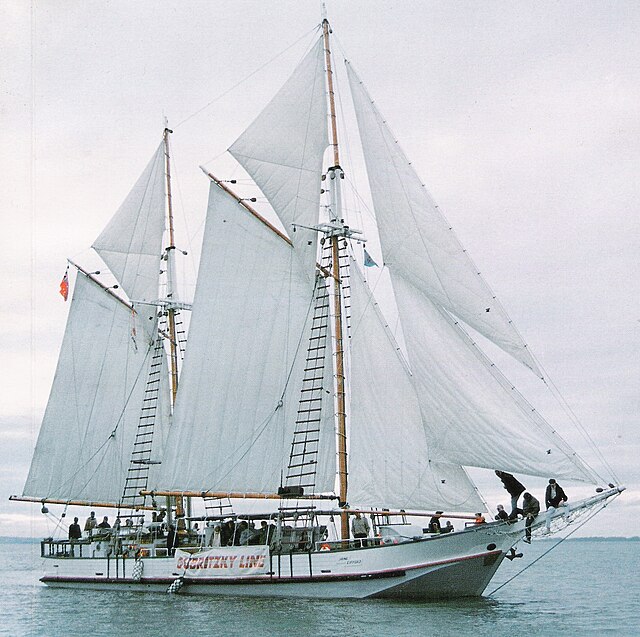A scow is a smaller type of barge. Some scows are rigged as sailing scows. In the 19th and early 20th centuries, scows carried cargo in coastal waters and inland waterways, having an advantage for navigating shallow water or small harbours. Scows were in common use in the American Great Lakes and other parts of the U.S., Canada, southern England, and New Zealand. In modern times their main purpose is for recreation and racing; there are also garbage scows for aquatic transport of refuse.
A New Zealand scow around 1900
A scow on the Adour in Bayonne in 1843 by Eugène de Malbos.
Jane Gifford Re-rigged, Manukau Harbour 1993. Photo: Subritzky Collection.
Barge often refers to a flat-bottomed inland waterway vessel which does not have its own means of mechanical propulsion. The first modern barges were pulled by tugs, but on inland waterways, most are pushed by pusher boats, or other vessels. The term barge has a rich history, and therefore there are many other types of barges.
Barges towed by a tugboat on the River Thames in London, England, UK
A British Airways Concorde being towed in New York City, USA. It is on a deck barge.
River barge below Barton Aqueduct c. 1793
A Dutch barge in Namur







